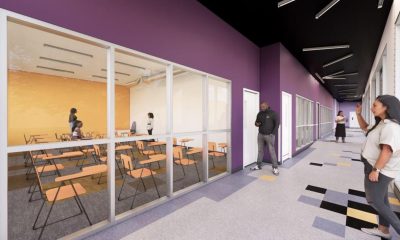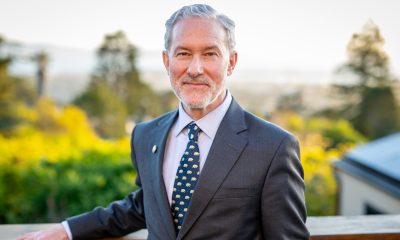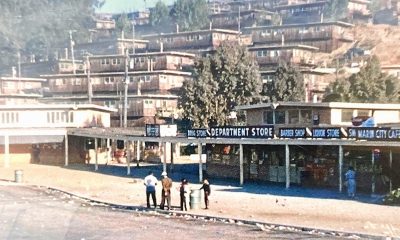Community
Students, Families Celebrate at West Contra Costa Unified’s First Prom for Students With Special Needs
Students with special needs at West Contra Costa Unified were full of smiles and laughter Saturday as they danced and partied at a prom event specifically tailored for them. Saturday’s event, the first of its kind at West Contra Costa Unified, was planned for students with extensive support needs such as autism and moderate to severe intellectual abilities for whom the traditional prom — with loud music and extensive light displays — might be overstimulating.

By Ali Tadayon
EdSource
Students with special needs at West Contra Costa Unified were full of smiles and laughter Saturday as they danced and partied at a prom event specifically tailored for them.
Saturday’s event, the first of its kind at West Contra Costa Unified, was planned for students with extensive support needs such as autism and moderate to severe intellectual abilities for whom the traditional prom — with loud music and extensive light displays — might be overstimulating.
Dozens of students and their families attended the event, which featured a sensory room, soft lights and support staff in order to comfort students experiencing sensory overload, which people with disabilities that cause hypersensitivity are prone to.
For Sonja Neely-Johnson, the district’s special education local plan area director, the prom was a milestone event. Apart from being one of the event’s organizers, she’s also the mother of a 21-year-old with special needs. When she saw him walk into the event Saturday, she said she was flooded with memories of doctors saying he would never be able to walk at all and other grim prognoses.
“Just being able to see my son walk into a dance, yeah, he has to have his little device with him because he needs that; it just warms my heart. I’ve actually been emotional all day,” Neely-Johnson said.
Students dressed up in tuxedos and prom dresses, danced, played games like limbo and posed for pictures in the high school cafeteria, which was selected because the building is smaller and slightly darker than a gym, in order to not overstimulate the students, said Guthrie Fleischman, director of secondary special education programs at West Contra Costa Unified.
According to the advocacy group Autism Speaks, many people on the autism spectrum experience hypersensitivity to bright lights or certain light wavelengths, such as LED or fluorescent lights. The dance floor also featured fewer lights than that of a typical prom. Still, the music was loud enough to fill the room, and the DJ played popular hit songs.
Student Bianca Rios said her favorite part of the prom was being with all of her friends. Another student, Corinn Phillips, said she enjoyed dancing, especially to her favorite songs by Katy Perry.
One of the rooms in the cafeteria building was designated as a “sensory room” and staffed with an occupational therapist for students who felt overwhelmed. The room had beanbag chairs and soft lighting to comfort students, as well as sensory toys that students could spin, squish and stretch, to engage and regulate sensory needs.
The district’s special education department also made personal communication boards with pictures of phrases such as “It’s too loud,” “I like the decorations” and “I need a break” that nonverbal students could use to communicate.
In addition to the occupational therapists at the event, the prom also had about a 1:1 ratio of paraprofessionals to students, he said.
“It’s a different level of support that would be difficult to present in a traditional prom setting,” Fleischman said.
The idea for the prom came because families of students with special needs at West Contra Costa Unified organized a prom of their own last year, held at a charter school within the district. Though the event was small, the families who attended told the district’s special education department they had a great time, and department officials decided to throw an official West Contra Costa Unified one, inviting students in the transition program serving students aged 18 to 22.
Neely-Johnson said the goal is to eventually make traditional proms inclusive enough that all students and their families are comfortable attending — a prospect that worries some parents who fear their children with special needs would feel ostracized.
“I think until we get to a point as a society, we’re going to have both (proms for special needs students and traditional proms),” Neely-Johnson said.
Dozens of families attended Saturday’s event. Denise Miles, whose son Devin Phillips is 22 and in his last year of the transition program, said many of the families have known each other for years as their children grew up in classes together. Miles said she felt differently when Devin went to his high school’s traditional prom a few years earlier.
“When he went to the prom, I didn’t know a lot of those parents in general ed because we don’t really mix and mingle like that,” she said. “I hope (the district) continues to have something special for our kids.”
The biggest difference between this prom and a traditional one, Miles said, was that everyone was accepting of each other, and though her son is oftentimes “hollering and spinning,” people weren’t looking at him.
“They could just be themselves, whatever that is, and no one’s looking at them crazy and judging,” Miles said. “As a SPED (special education) parent, it’s a really good feeling to see because you always want your child to be accepted, and we have that here.”
Copyright © 2023 Bay City News, Inc. All rights reserved. Republication, rebroadcast or redistribution without the express written consent of Bay City News, Inc. is prohibited. Bay City News is a 24/7 news service covering the greater Bay Area.
Activism
Oakland Post: Week of April 24 – 30, 2024
The printed Weekly Edition of the Oakland Post: Week of April 24 – 30, 2024
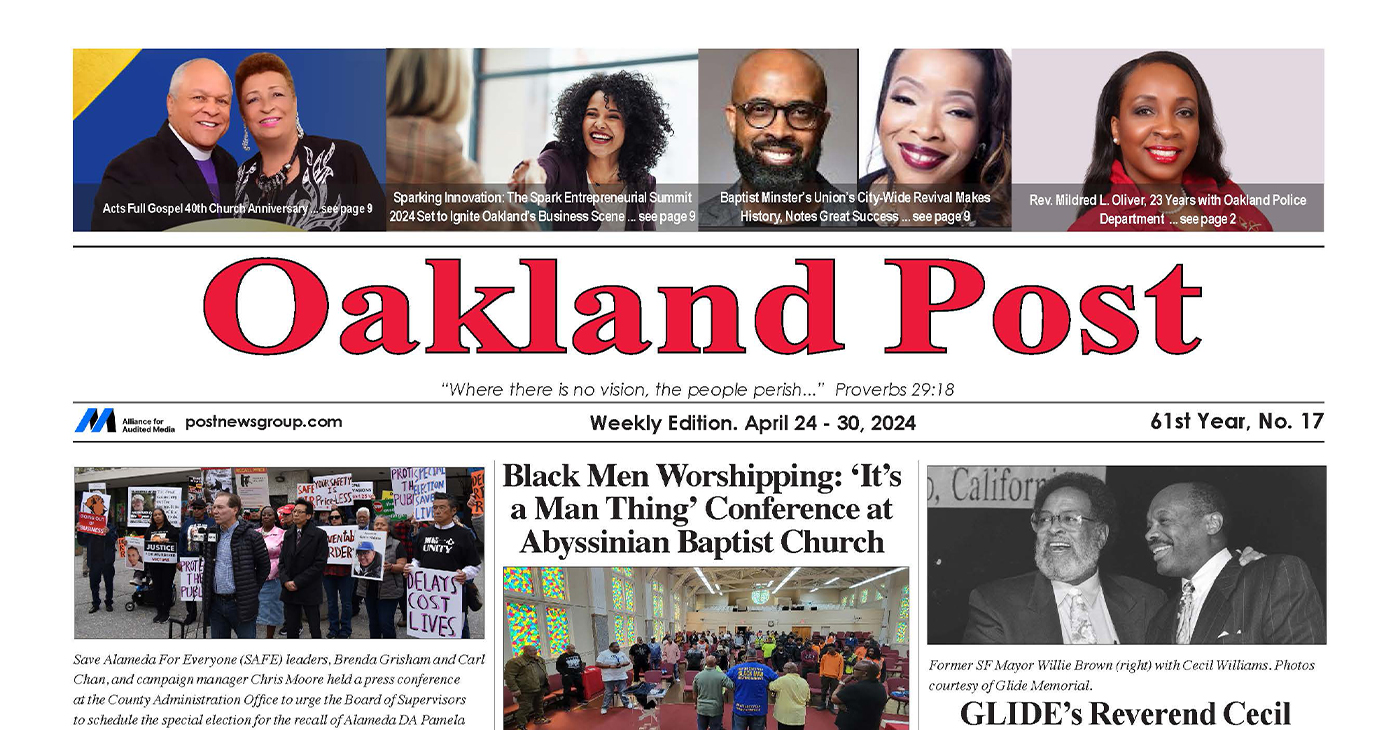
To enlarge your view of this issue, use the slider, magnifying glass icon or full page icon in the lower right corner of the browser window. ![]()
Alameda County
DA Pamela Price Stands by Mom Who Lost Son to Gun Violence in Oakland
Last week, The Post published a photo showing Alameda County District Attorney Pamela Price with Carol Jones, whose son, Patrick DeMarco Scott, was gunned down by an unknown assailant in 2018.
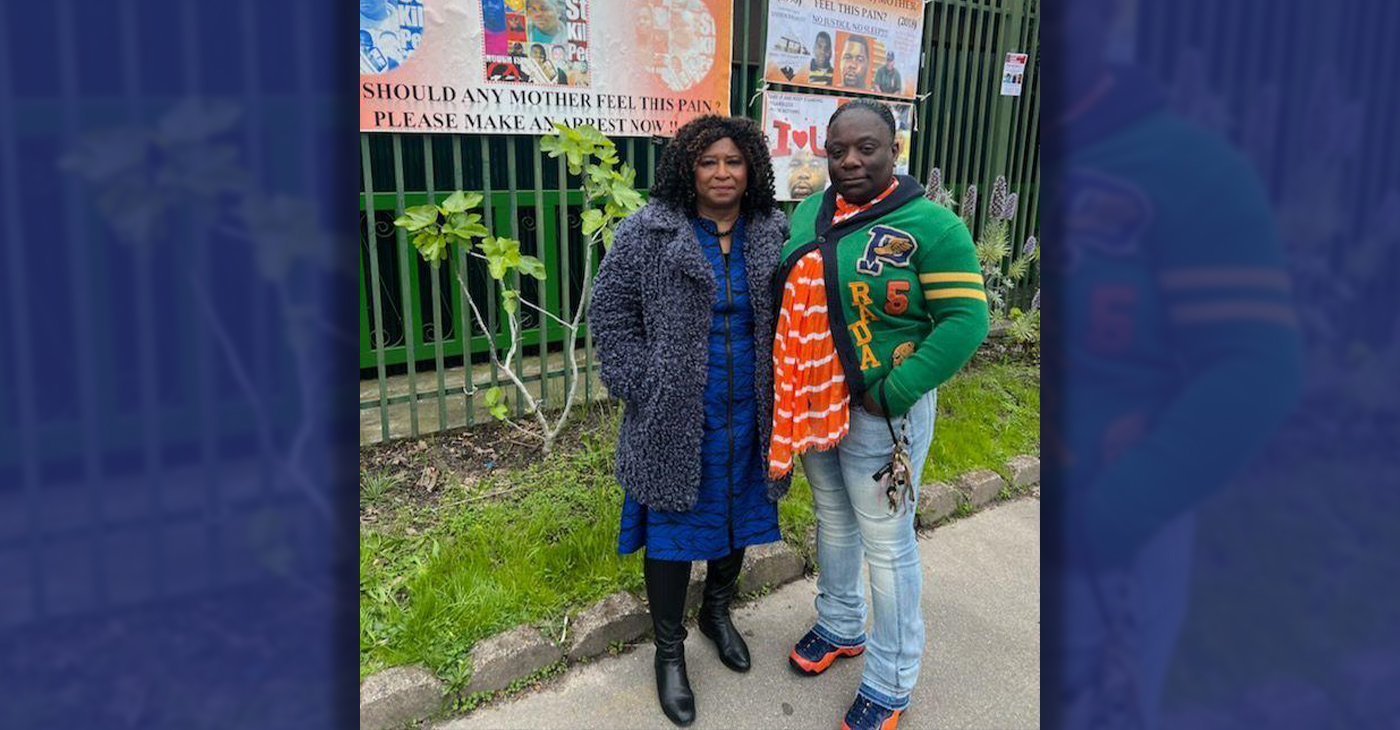
Publisher’s note: Last week, The Post published a photo showing Alameda County District Attorney Pamela Price with Carol Jones, whose son, Patrick DeMarco Scott, was gunned down by an unknown assailant in 2018. The photo was too small for readers to see where the women were and what they were doing. Here we show Price and Jones as they complete a walk in memory of Scott. For more information and to contribute, please contact Carol Jones at 510-978-5517 at morefoundation.help@gmail.com. Courtesy photo.
City Government
Vallejo Welcomes Interim City Manager Beverli Marshall
At Tuesday night’s Council meeting, the Vallejo City Council appointed Beverli Marshall as the interim city manager. Her tenure in the City Manager’s Office began today, Wednesday, April 10. Mayor Robert McConnell praised Marshall’s extensive background, noting her “wide breadth of experience in many areas that will assist the City and its citizens in understanding the complexity of the many issues that must be solved” in Vallejo.
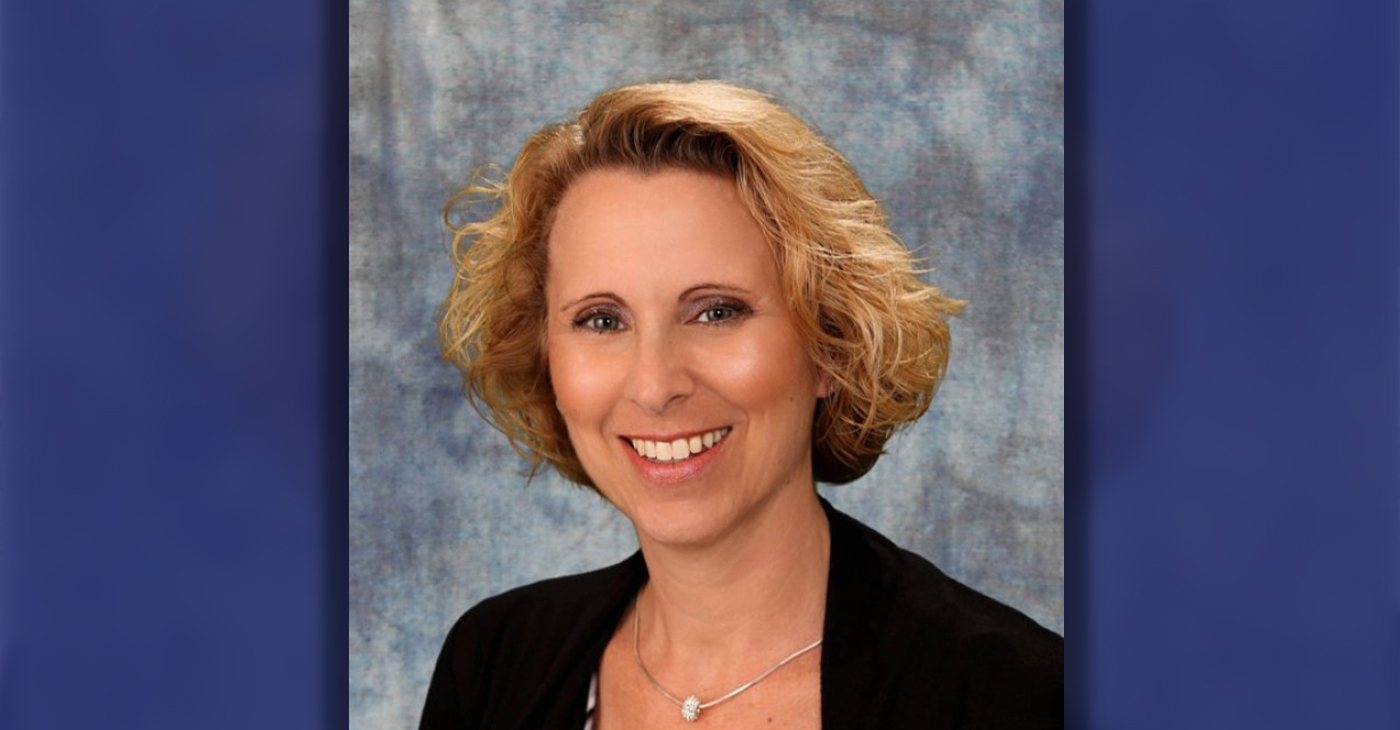
Special to The Post
At Tuesday night’s Council meeting, the Vallejo City Council appointed Beverli Marshall as the interim city manager. Her tenure in the City Manager’s Office began today, Wednesday, April 10.
Mayor Robert McConnell praised Marshall’s extensive background, noting her “wide breadth of experience in many areas that will assist the City and its citizens in understanding the complexity of the many issues that must be solved” in Vallejo.
Current City Manager Michael Malone, whose official departure is slated for April 18, expressed his well wishes. “I wish the City of Vallejo and Interim City Manager Marshall all the best in moving forward on the progress we’ve made to improve service to residents.” Malone expressed his hope that the staff and Council will work closely with ICM Marshall to “ensure success and prosperity for the City.”
According to the Vallejo Sun, Malone stepped into the role of interim city manager in 2021 and became permanent in 2022. Previously, Malone served as the city’s water director and decided to retire from city service e at the end of his contract which is April 18.
“I hope the excellent work of City staff will continue for years to come in Vallejo,” he said. “However, recent developments have led me to this decision to announce my retirement.”
When Malone was appointed, Vallejo was awash in scandals involving the housing division and the police department. A third of the city’s jobs went unfilled during most of his tenure, making for a rocky road for getting things done, the Vallejo Sun reported.
At last night’s council meeting, McConnell explained the selection process, highlighting the council’s confidence in achieving positive outcomes through a collaborative effort, and said this afternoon, “The Council is confident that by working closely together, positive results will be obtained.”
While the search for a permanent city manager is ongoing, an announcement is expected in the coming months.
On behalf of the City Council, Mayor McConnell extended gratitude to the staff, citizen groups, and recruitment firm.
“The Council wishes to thank the staff, the citizens’ group, and the recruitment firm for their diligent work and careful consideration for the selection of what is possibly the most important decision a Council can make on behalf of the betterment of our City,” McConnell said.
The Vallejo Sun contributed to this report.
-

 Activism4 weeks ago
Activism4 weeks agoOakland Post: Week of March 27 – April 2, 2024
-

 #NNPA BlackPress4 weeks ago
#NNPA BlackPress4 weeks agoBeloved Actor and Activist Louis Cameron Gossett Jr. Dies at 87
-

 Community1 week ago
Community1 week agoFinancial Assistance Bill for Descendants of Enslaved Persons to Help Them Purchase, Own, or Maintain a Home
-

 Activism3 weeks ago
Activism3 weeks agoOakland Post: Week of April 3 – 6, 2024
-

 Business1 week ago
Business1 week agoV.P. Kamala Harris: Americans With Criminal Records Will Soon Be Eligible for SBA Loans
-

 Activism2 weeks ago
Activism2 weeks agoOakland Post: Week of April 10 – 16, 2024
-

 Community1 week ago
Community1 week agoAG Bonta Says Oakland School Leaders Should Comply with State Laws to Avoid ‘Disparate Harm’ When Closing or Merging Schools
-

 Community6 days ago
Community6 days agoOakland WNBA Player to be Inducted Into Hall of Fame

